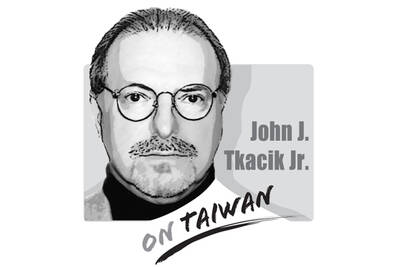Powerful nations throughout history have either been thalassocratic or tellurocratic: either sea-based or land-based powers. It seems China wants to be both.
China has proposed establishing a permanent military base in Vanuatu, something the Pacific island nation vehemently denies, saying it is undergoing preliminary discussions and that no formal proposals have been made.
What Vanuatu failed to mention was that those preliminary discussions included allowing navy vessels from China’s People’s Liberation Army to make regular port calls for repairs and maintenance.
For Australia, China’s usage of Vanuatu would be the second time the nation has faced a national security threat in its own backyard — the first was when Japan captured Rabaul in Papua New Guinea during World War II — and using it as its major military and naval base in the South Pacific.
For the US, this would be its first substantial military strategic threat in the region since it expelled Japan from the Pacific arena after the war.
Experts believe that Tonga will be next. China’s taking of Vanuatu not only affects New Zealand and Australia, but also allows China to extend its control over the Pacific and gives it a clear stretch to South America. This is quite a momentous move.
In 2011, US consultants devised the “string of pearls” hypothesis to describe how China is, through investments and loans, developing a maritime infrastructure connecting ports in the Indian Ocean to ensure oil supply to the Middle East. At the time, it was regarded as a way for China to address its “Malacca dilemma.”
In 2013, China began transforming coral reefs in the South China Sea into military bases, and in 2014, the same year in which Chinese investors won the contract to build the Nicaragua Canal, it announced its Belt and Road Initiative.
The northern “silk road” and southern “string of pearls” extends China’s focus from Middle Eastern oil to African resources and further afield to European technology and markets.
In 2015, Thailand and China signed a memorandum of understanding to construct a shipping passage across southern Thailand’s Kra Isthmus. The proposal was immediately denied, as Thailand had agreed — in the Secret Anglo-Siamese Convention of 1897 and the Anglo-Thai Peace Treaty of 1946 — to not construct a canal in that location without the UK’s approval, but it has been reported that planning is nearly finished.
Last year, China’s military base in Djibouti became operational; this year, China published its “Arctic policy” white paper; now there have been reports of China using Vanuatu as a military base.
In a few short years, China has rapidly extended its reach to the point that it will be difficult to keep under control.
With all of these initiatives, China has clearly set its eyes on the entire world — all that remains is the Atlantic Ocean.
China’s provision of loans is aimed at ensuring that debtor nations have no way of repaying the money, allowing China 99-year leases on strategic bases in their territories. In Vanuatu, 47 percent of foreign investment is Chinese. There are also controversies over the Hambantota Port and in the Maldives, and anger within certain African nations.
Even the US needs to rely on its global allies to extend its reach. Within a decade, China has extended its reach at an alarming rate, posing the question of how it is to be funded. China has not yet completed the transformation from a tellurocracy to a thalassocracy — could it have overextended and lost sight of its basic strategy?
HoonTing is a political commentator.
Translated by Paul Cooper

On May 7, 1971, Henry Kissinger planned his first, ultra-secret mission to China and pondered whether it would be better to meet his Chinese interlocutors “in Pakistan where the Pakistanis would tape the meeting — or in China where the Chinese would do the taping.” After a flicker of thought, he decided to have the Chinese do all the tape recording, translating and transcribing. Fortuitously, historians have several thousand pages of verbatim texts of Dr. Kissinger’s negotiations with his Chinese counterparts. Paradoxically, behind the scenes, Chinese stenographers prepared verbatim English language typescripts faster than they could translate and type them
More than 30 years ago when I immigrated to the US, applied for citizenship and took the 100-question civics test, the one part of the naturalization process that left the deepest impression on me was one question on the N-400 form, which asked: “Have you ever been a member of, involved in or in any way associated with any communist or totalitarian party anywhere in the world?” Answering “yes” could lead to the rejection of your application. Some people might try their luck and lie, but if exposed, the consequences could be much worse — a person could be fined,
Xiaomi Corp founder Lei Jun (雷軍) on May 22 made a high-profile announcement, giving online viewers a sneak peek at the company’s first 3-nanometer mobile processor — the Xring O1 chip — and saying it is a breakthrough in China’s chip design history. Although Xiaomi might be capable of designing chips, it lacks the ability to manufacture them. No matter how beautifully planned the blueprints are, if they cannot be mass-produced, they are nothing more than drawings on paper. The truth is that China’s chipmaking efforts are still heavily reliant on the free world — particularly on Taiwan Semiconductor Manufacturing
Keelung Mayor George Hsieh (謝國樑) of the Chinese Nationalist Party (KMT) on Tuesday last week apologized over allegations that the former director of the city’s Civil Affairs Department had illegally accessed citizens’ data to assist the KMT in its campaign to recall Democratic Progressive Party (DPP) councilors. Given the public discontent with opposition lawmakers’ disruptive behavior in the legislature, passage of unconstitutional legislation and slashing of the central government’s budget, civic groups have launched a massive campaign to recall KMT lawmakers. The KMT has tried to fight back by initiating campaigns to recall DPP lawmakers, but the petition documents they